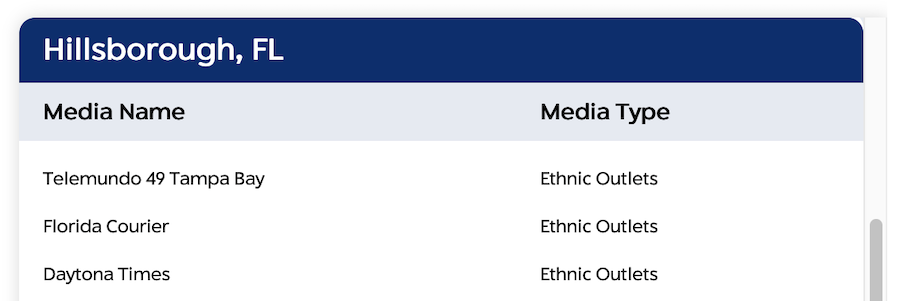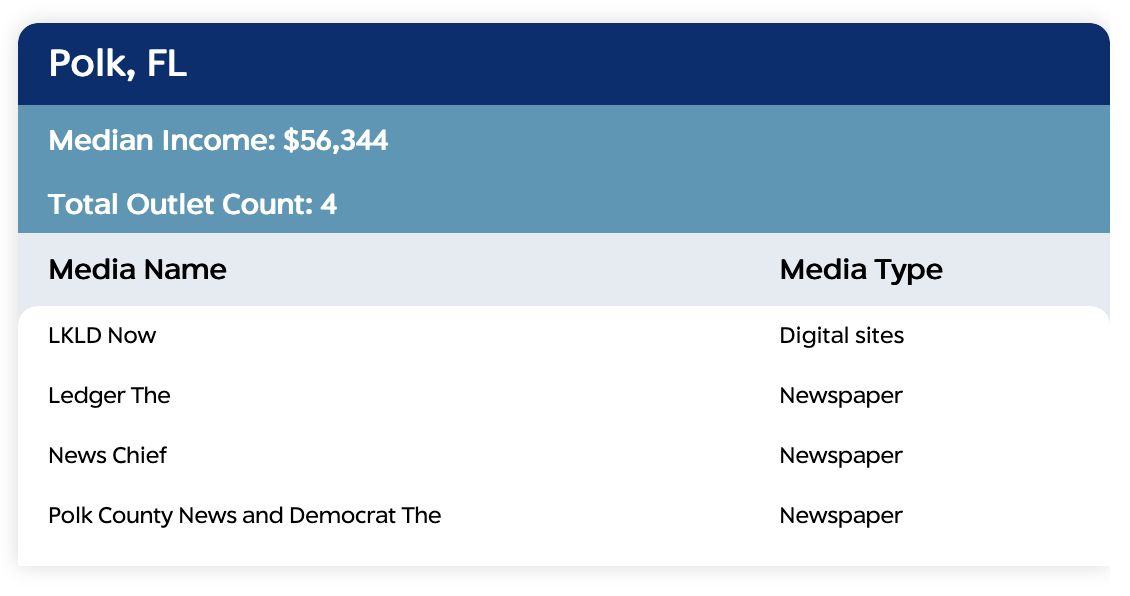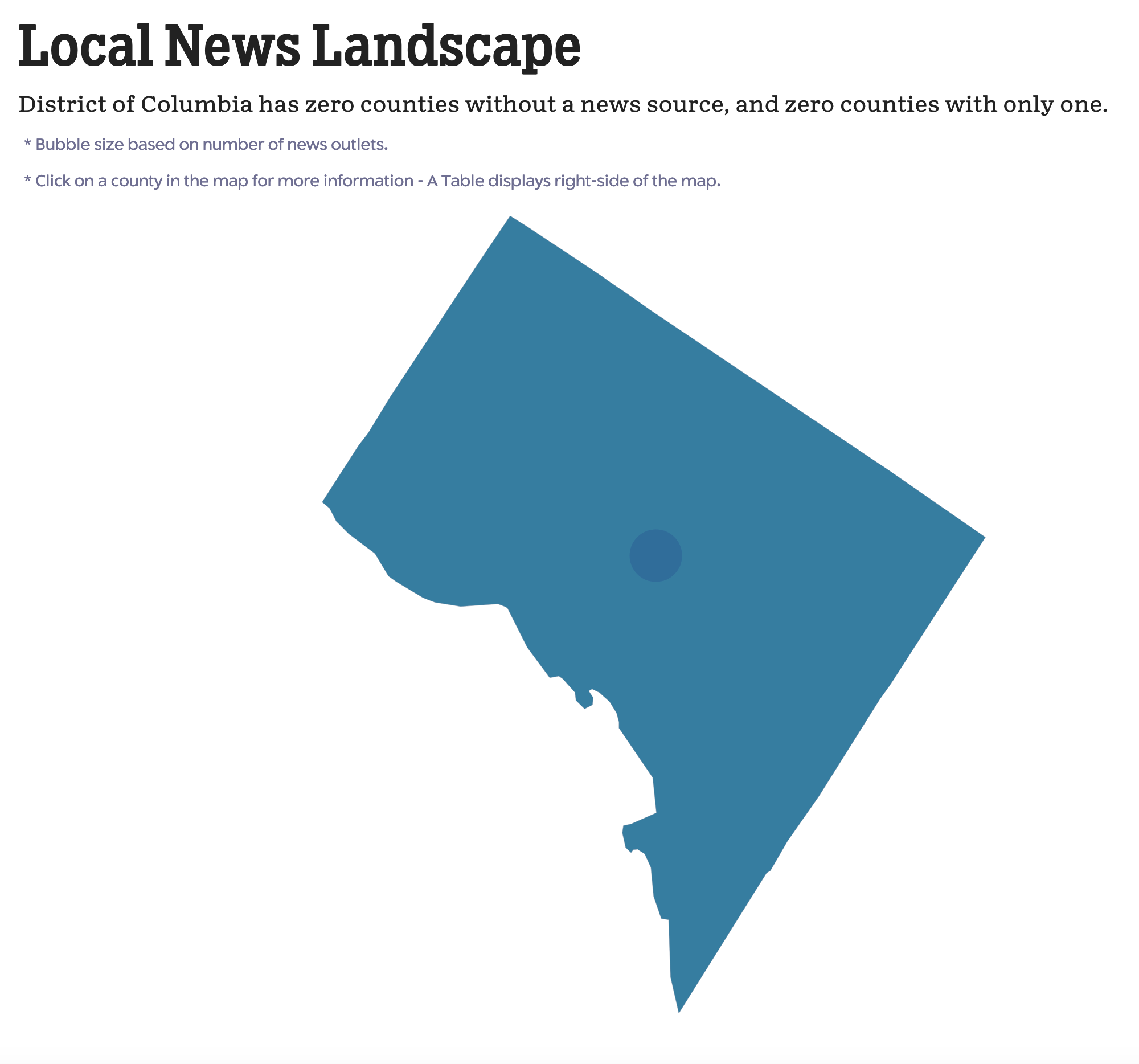The Medill Local News Map Is a Sad Mess
"Unacceptable." Yep.

By Alice Dreger
The mail keeps coming, and it’s not looking good for the Medill Local News Initiative mapping project. Which means it's not looking good for those of us whose industry is being represented by it.
All credit to the Medill-based team for releasing the data after I called for that in January. But in just a couple of days, with your crowdsourced help, here’s what we’ve found in terms of types of significant errors.
Outlets in the wrong counties.
After we encouraged folks to check out the maps for their own areas, Barry Friedman, founder and editor-at-large of LkldNow in Lakeland, Florida, took a look at some of the mapping data for his state and found “lots of mistakes.”
Among them, the Daytona Times, which describes itself as “the reliable and credible source for news and information about African American communities in East Florida,” is listed as being in Hillsborough County, on the west side of Florida. Um.

Meanwhile, in Michigan, the map puts Detroit Public Radio in Oakland County – not Wayne, where Detroit is actually located.
Inexplicable omissions.
Here’s but a sample:
Medill’s map supposedly draws data from the membership lists of INN and LION, yet we’ve had numerous reports of INN and LION members missing: AfroLA, DC Witness, Baltimore Witness, East Lansing Info, and on and on.
Friedman gave as another example Lake Wales News, which is missing from Medill’s list for Polk County, Florida.

Friedman notes that the Polk County list is also missing the Winter Haven Sun and Polk Sun, both weekly newspapers. But it does include the Polk County Democrat, which, he writes, “folded a few years ago. (Truly a ghost newspaper.)”
Daily Detroit doesn’t make Medill’s map for Wayne County, Michigan, despite being listed at #4 in Feedspot’s “Top 15 Detroit News Websites.”
Michael McGinnis, editor of Rockton-Roscoe News in Winnebago County, Illinois, wrote in to say Medill has got his outlet on the map. Yay!
“But it doesn't list the Rock-River Current,” also in Winnebago County. Boo.
And how do you miss a public television station that’s been serving Pennsylvania’s Greater Lehigh Valley for over 50 years? That was the question we had after we learned of that omission from Yoni Greenbaum, Chief Operating Officer for Univest Public Media Center in Bethlehem.
The map also missed 91.3 WLVR, which Greenbaum describes as “the only full-time, professional NPR station serving Lehigh and Northampton counties. And they ignored Lehighvalleynews.com which is a nearly 3-year-old digital news operation serving Lehigh and Northampton counties and featuring one of the largest newsrooms in the Lehigh Valley.”
Then there’s the omission of Patch outlets across the country. About that methodological flaw, in an earlier post, we relayed the specific criticisms raised by Tony Schinella, Senior Field Editor for Patch Media in New Hampshire and Rhode Island. Here's what he has to say more generally:
“These studies and analysis may not look at what we’re all doing [at Patch] to deliver news and information to the public as the same or as important as full-time staffers working as meeting stenographers for a town meeting a few hundred people care about like the days of yore. But we all work very hard to provide news and information to the public, each and every day, just like the journalists of the past. And that should not be ignored.”
Duplications.
Here again, the data for Polk County in Florida raises a red flag.
Under newspapers for Polk County, Friedman writes, “Medill lists both The Ledger and The News Chief. I suppose that is technically correct, but The News Chief ceased to be a separate newspaper years ago; The Ledger just slaps a new masthead on for a portion of its circulation area.”
Another example relayed yesterday from Sean Nestor: the Toledo Journal in Ohio is counted twice for Lucas County, once as “Toledo Journal” and once as “The Toledo Journal.”
By the way, Sean also noted that the Toledo Journal was counted once as “ethnic” and once as not. It’s not hard to get this categorization right; the paper’s “about” page plainly states, “We are the oldest African-American owned newspaper in northwest Ohio proudly serving Toledo and Northwest Ohio communities since 1975.”
But the way the data was mis-entered for the Toledo Journal – once as ethnic, once as not – waters down the percentage of outlets that serve ethnicity-specific audiences.
That leads us to the next concern...
Ethnic outlets appear to be disproportionately undercounted.
Based on the mail we’re getting, it looks like ethnic outlets are relatively more likely to be missing from the map and to be incorrectly categorized.
In our original post about the map, we noted that New Citizens Press – which primarily serves the Black community in the area of Lansing, Michigan – was missing. The map added New Citizens Press following our shining of a light on the error, but we’ve found lots more reasons to believe ethnic outlets are being undercounted.
For example, yesterday we noted that Penda Howell, CEO/Publisher of NJUrbanNews.com, discovered his outlet is listed as digital but not categorized as serving the Black community (which it does). As noted earlier, on the west coast, AfroLA is also missing.
Today, a reader who studied the map for Metro Detroit noted El Central Hispanic News, the Detroit Jewish News, and the Arab-American News (which delivers local reporting as well as national) all appear to be missing.
Bad summary data.
Summary claims about the map appear to be auto-generated from source data, leading to some really bizarre statements of “information.”
For example, if you look at the information for Washington, D.C., the system tells you, “District of Columbia has zero counties without a news source, and zero counties with only one.” What?

The data then lists 18 news sources for DC – again missing at least one, DC Witness, which does straightforward factual reporting on every homicide in the District and is a member of INN.
We have a feeling that’s not the only DC local news outlet to be overlooked.
This thing is a mess. And that’s a shame.
It is both disappointing and alarming to discover the widespread errors of the Medill local news map.
In the words of Nancy West, Executive Editor of InDepthNH.org, “This map is misleading at a time when major funders and investors may be relying on it to make decisions about the future of local news. Unacceptable.”
Find all our posts on the Medill map here. To search your area of the Medill map, go to this page, then scroll down just below the map and choose your state. Then click on the county you’re interested in. You can send us your observations by email.
Alice Dreger is a journalist, historian, and the publisher of Local News Blues. She founded East Lansing Info, a nonprofit digital investigative news service, and ran the operation for about ten years. Read more at the Local News Blues contributors page.





